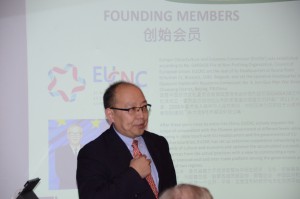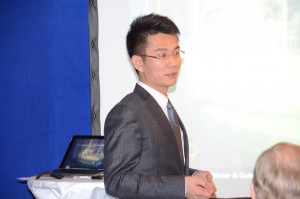BOAO, Hainan, March 24 (Xinhua) — By removing systematic blocks and adopting new technology, China will be able to expand access to financial services to all people, according to experts at the Boao Forum conference.
Recent changes by China’s rural and private financial institutions will help relieve obstacles to inclusive finance, which have held back the nation’s anti-poverty efforts, according to experts at the 2016 Annual Conference of the Boao Forum for Asia, held in China’s island province of Hainan.
INCLUSIVE FINANCE IN THE SPOTLIGHT
With a bad loan rate of 88.3 percent, Hainan Rural Credit Union, a rural credit cooperative in Hainan, was on the verge of collapse in 2007. Over the past nine years, the cooperative has focused on rural microcredit, lending a total of 23 billion yuan (about 3.5 billion U.S. dollars) to Hainan’s 600,000 rural households. The non-performing loan rate has dropped to less than 2 percent.
Thanks to financial education and agricultural training provided to borrowers, Wu Weixiong, board chairman of Hainan Rural Credit Union, isn’t worried about the 23 billion yuan in loans his cooperative has made to the island’s rural population.
“Our staff are experts in both finance and agriculture, which enables them to help farmers acquire necessary knowledge and techniques to make a living and pay back the loan,” he told attendees at the “Inclusive Finance” Boao sub-forum.
Private financial institutions are also making financial services much more accessible to people who are underserved by traditional banks. Ant Financial, a financial arm established last June by the E-commerce giant Alibaba, has lent a total of 45 billion yuan to farmers, online merchants, restaurant owners and mom-and-pop stores, extending loans to 800,000 borrowers who have trouble accessing financial services.
Despite the efforts, a large proportion of the population still lacks access to financing, according to the experts.
NOT ALL HAVE ACCESS
“The core of the problem is that inclusive financing is badly needed by rural people,” said Dong Wenbiao, board chairman of China Minsheng Investment Corp. Ltd., the nation’s largest private equity firm.
The nation still has 55.75 million impoverished people in rural areas, official statistics showed.
Dong blamed “serious systematic deficiency” for the problem, saying that China’s existing financial establishments, including the banking and insurance systems, don’t support expanding access to finance. Large banks are inclined to lend to big companies with lower risk.
The lack of an individual credit system, high operational costs and risks, and the absence of an information-sharing mechanism have all worsened the situation, according to Li Yang, vice director of the Chinese Academy of Social Sciences.
Inclusive finance will play a key role in China’s goal of building a “well-off society” by 2020. The nation’s financial industry should make itself available to all people, said Wu Xiaoling, vice chairwoman of the Financial and Economic Committee of the National People’s Congress and former vice governor of the central bank.
More than 50 countries have set formal targets and goals for inclusive finance in recent years, indicating growing global recognition that access to financial services plays a critical role in reducing extreme poverty, boosting shared prosperity, and supporting sustainable development.
SYSTEMATIC REFORMS
To clear hurdles, the State Council in January released the 2016-2020 Plan on the Development of Inclusive Finance, China’s first national strategic plan on financial inclusion. It targeted building inclusive financial service and security systems that provide reasonably-priced, convenient and secure services to small companies, farmers, low-income urban households, the poor, the disabled and the elderly. It vowed to boost inclusive finance’s development to a level comparable to the global average by 2020.
The government also reiterated in a report in March the development of inclusive finance to increase services for micro, small, and medium-sized businesses as well as for rural areas.
“To tackle the issue, systematic reforms are required,” said Dong, suggesting that farmers should be endowed with land rights that can be viewed as assets when obtaining loans.
Ellen Richey, vice chairwoman of Risk and Public Policy at Visa Inc., said that China already has an advantage in fostering inclusive finance, as 79 percent of its residents have financial accounts, much higher than most countries. But account holders generally only use them for basic banking services or use them infrequently.
“The challenge to inclusive finance in China is not necessarily to get someone an account, but to give them an efficient way to use it,” she said, adding that electronic payment and mobile phones will enable China to bypass expensive investment in infrastructure, such as terminals and telecommunications.
Former New Zealand Prime Minister Jenny Shipley called on lenders to form trust relationships based on human potential, rather than just looking at assets. Shipley said that micro-finance requires collaboration between multiple players, including governments, financial institutions and NGOs. Enditem












